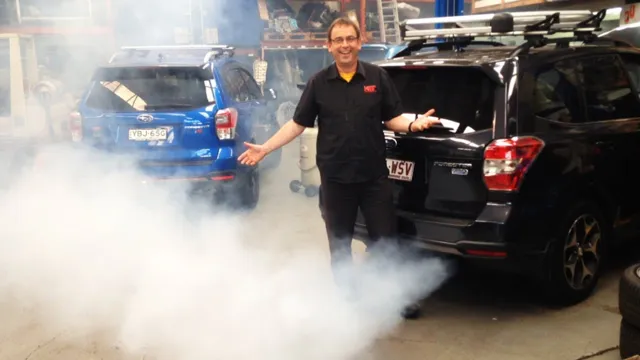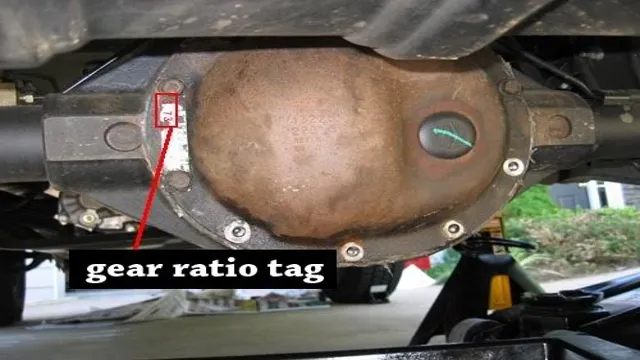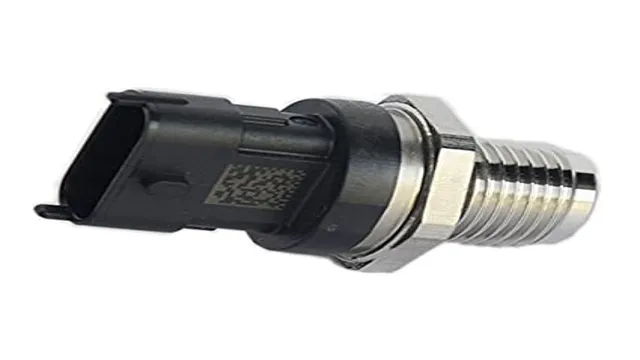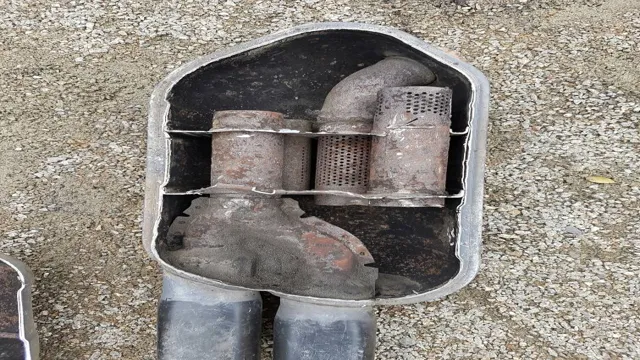Unlock Your Engine’s Power: Step-by-Step Guide on How to Do a Force Regen
Have you ever noticed your car struggling to run smoothly, with the engine light flashing on and off? Or maybe you’ve felt your smartphone lagging and freezing up, even after multiple restarts? These frustrating situations could be resolved with a simple force regen. A force regen, short for force regeneration, is a process used to clear out any blocked or clogged systems in order to restore a device’s optimal performance. It’s like a detox for your tech.
While force regen can apply to various electronics, this post will focus on how to do a force regen for diesel engines. If you own or operate a diesel vehicle or machine, you know that proper maintenance is crucial for longevity and efficiency. A force regen is one part of that maintenance.
In this post, we’ll discuss what a force regen is, why it’s necessary, and how to do it step-by-step. Whether you’re a seasoned mechanic or a diesel newbie, this guide will equip you with the knowledge and skills to keep your diesel engine running smoothly. So, let’s jump right into the details of how to do a force regen.
What Is a Force Regen?
If you’re wondering how to do a force regen, you’re likely concerned with keeping your vehicle running smoothly and reducing the risk of potentially costly repairs. Simply put, a force regen is the process of cleaning out the build-up of soot and other pollutants in your diesel engine’s Diesel Particulate Filter (DPF). This is done by forcing the engine to heat up and burn off the soot, which can accumulate over time and cause reduced engine performance or even failure.
To do a force regen, you’ll need to connect your vehicle to specialized diagnostic equipment that can initiate the process. This is typically done by a professional mechanic or technician who has experience working with diesel engines, but some newer vehicles may have built-in force regen systems that can be activated by the driver. Keep in mind that regular maintenance and preventative measures like using high-quality fuel and oil can help reduce the need for a force regen in the first place.
Definition and Purpose
A force regen is a process that clears the errors and faults in a system by issuing a “forced regeneration” command. This command instructs the system to initiate a cleaning cycle, which removes the particles and soot buildup from the diesel particulate filter (DPF) or the exhaust gas recirculation (EGR) valve. The purpose of a force regen is to restore the system’s efficiency and performance by preventing further damage and downtime.
It is usually performed when a fault code is detected in the system, indicating that there is an issue with the DPF or EGR valve. If left unattended, a faulty DPF or EGR valve can result in decreased fuel economy, engine misfires, and costly repairs. By using a force regen, the system can be quickly cleaned and back to optimal performance.
Overall, a force regen is a crucial maintenance procedure that ensures the longevity and reliability of diesel-powered vehicles and machinery.
Signs Your Vehicle Needs a Force Regen
If you have a diesel engine vehicle, you may have heard of a force regeneration, also known as a forced regen. This process is necessary for maintaining a healthy diesel particulate filter (DPF), which is responsible for filtering out harmful pollutants from your vehicle’s exhaust system. Essentially, a force regen involves running the engine at a high temperature for an extended period to burn off any soot that has accumulated in the filter.
Signs that your vehicle may need a force regen include a loss of power, decreased fuel efficiency, and dashboard warning lights indicating a problem with the DPF. It’s important to address these issues promptly to avoid any potential damage to your vehicle’s engine. So, if you notice any of these symptoms, it’s a good idea to have your vehicle inspected by a trusted mechanic who can determine if a force regen is needed.
Trust us, it’s better to be safe than sorry when it comes to the health of your diesel engine!
How to Perform a Force Regen
If you’re experiencing issues with your diesel engine, a force regen may be necessary to get it working properly. A force regen, short for forced regeneration, helps remove soot buildup in the engine’s diesel particulate filter (DPF). To perform a force regen, you will need specialized diagnostic equipment that communicates with your engine’s computer system.
Once connected, you will need to follow the system prompts to initiate the force regen process. During the process, the accumulated soot will be burned off and expelled out of the exhaust. It’s important to note that force regen should only be performed by a qualified professional with proper equipment and experience to avoid causing irreparable damage to the engine.
So, if you’re unsure how to do a force regen, it’s best to take your vehicle to a certified mechanic.
Step-by-Step Guide
Performing a force regen on your diesel engine can be a daunting task if you’re not familiar with the process. However, with the right tools and guidance, it can be done quickly and efficiently. The first step is to make sure your vehicle is parked on a level surface with the engine turned off.
Next, you’ll want to remove the DPF (Diesel Particulate Filter) and perform an inspection to see if it needs to be cleaned or replaced. Once you’ve cleared any debris or built-up soot, it’s time to initiate the force regen process by engaging the engine’s electronics and allowing it to run for a designated amount of time. It’s important to monitor the engine’s heat levels during this process to avoid causing any damage to the engine.
Once the process is complete, replace the DPF and perform a final inspection to ensure everything is in working order. By following these steps, you can perform a force regen on your diesel engine with confidence and keep your vehicle running smoothly.
Tips and Precautions
Performing a force regen on your diesel engine is a crucial maintenance task that can help prevent costly repairs down the road. To begin, it’s important to ensure that your vehicle is parked on a level surface. Next, you’ll need to connect a diagnostic tool to your engine’s computer system to initiate the force regen process.
Keep in mind that during this process, the engine will rev at a high RPM, and you’ll need to let it run for approximately 30 minutes. It’s crucial that you monitor the process closely, as any issues that arise could result in damage to your engine components. Additionally, it’s important to ensure that your engine’s coolant and oil levels are at the appropriate levels before starting the process.
By following these simple tips and taking the necessary precautions, you can ensure that your force regen is successful and that your engine is running at peak performance.
Common Issues and Troubleshooting
Performing a force regen can be a solution for some common issues related to diesel vehicles. A force regen, also known as a forced regeneration, is the process of manually cleaning the diesel particulate filter (DPF) by burning off the soot that has accumulated inside it. One of the primary reasons for a force regen is when the DPF becomes clogged, which can cause a reduction in engine power and fuel efficiency and may trigger warning lights on the dashboard.
This process can be completed using either dealer equipment or a diagnostic scanner tool. However, it’s essential to note that even a force regen may not fix some underlying issues, and a professional mechanic should be consulted for more severe problems. In conclusion, a force regen can be a handy tool in resolving common DPF issues, but it’s not a permanent solution to resolve complicated engine problems.
When to Schedule a Force Regen
If you’re experiencing engine issues, a force regen might be necessary to clear out any buildup in the diesel particulate filter. But how do you know when it’s time to schedule a force regen? There are a few signs to look out for. First, if your dashboard warning lights are indicating a problem with the exhaust or emissions, it’s time to take action.
Additionally, if the DPF pressure gauge reads a high level or if you notice a decrease in engine power or fuel efficiency, it’s likely that regeneration is necessary. But don’t wait for these warning signs to appear before scheduling a preventative maintenance force regen. Regularly scheduled regenerations can help prevent buildup and avoid more serious engine issues in the future.
So if you’re unsure whether a force regen is needed, it’s always better to err on the side of caution and schedule one anyway.
Frequency and Maintenance
When it comes to scheduling a force regen, there are a few factors to consider. First of all, it’s important to understand what a force regen is. This is a process where the diesel particulate filter (DPF) is cleaned out by heating it to a high temperature and blowing air through it to remove the built-up soot.
This process is necessary to maintain proper engine function and EPA compliance. As for scheduling a force regen, it generally depends on the make and model of the vehicle, as well as how the vehicle is being used. Some manufacturers recommend a force regen every 150,000 to 200,000 miles, while others recommend it every 3,000 to 5,000 hours of engine operation.
It’s also important to pay attention to warning lights on the dashboard and follow any recommendations provided by the vehicle’s onboard computer. Ultimately, it’s best to follow the manufacturer’s recommended maintenance schedule to ensure your vehicle stays in good working order.
Professional vs. DIY Regen
As a truck owner or operator, you may wonder whether it is more appropriate to schedule a professional or DIY regen. Well, the answer depends on several factors. Firstly, you need to consider whether you possess the required skills and experience to perform a successful regeneration on your own.
DIY regeneration is applicable when you have the necessary knowledge, tools, and experience. However, if you lack any of these, it is advisable to call a professional technician. Another factor to consider is the truck model and make.
Some models have a manual regeneration process that requires specialized equipment, while others have an automatic regen system. Therefore, before scheduling a regen, it is crucial to understand the truck’s system and the type of regeneration required. Additionally, the frequency of regeneration is determined by the truck’s mileage and the driving conditions.
However, if the truck’s dashboard warning light is turned on, it is vital to schedule a force regen as soon as possible. Waiting or ignoring these alerts may lead to significant engine damage and costly repairs. In conclusion, understanding when to schedule a force regen can save you significant expenses in the long run.
If you possess the required knowledge and tools, you are free to perform the regen yourself. However, If you are new or inexperienced with the process, it is advisable to solicit the services of a professional technician. Remember, regular maintenance and attention to your truck’s warning signs are vital in preventing severe engine damage.
Conclusion
In conclusion, a force regen is like hitting the reset button on your body’s engine. It’s a way of clearing out any built-up gunk and getting things running smoothly again. Think of it like taking your car in for a tune-up – except instead of a mechanic, you’re relying on the power of nature and your own body’s ability to heal.
So the next time you’re feeling run down, stressed, or just generally out of sorts, consider giving yourself a force regen. Your body will thank you for it.”
FAQs
What is a force regen in a vehicle?
A force regen is a process in which the vehicle’s engine is cleaned of soot or debris through a forced regeneration process.
How do I know if my vehicle needs a force regen?
Signs that your vehicle may need a force regen include decreased engine power, decreased fuel efficiency, and increased emissions.
Can I perform a force regen on my own?
It is not recommended to perform a force regen on your own as it requires specialized equipment and knowledge. It is best to take your vehicle to a certified mechanic.
How long does a force regen take?
The time it takes to perform a force regen can vary depending on the vehicle and the level of buildup in the engine. It typically takes around 30 minutes to an hour.






